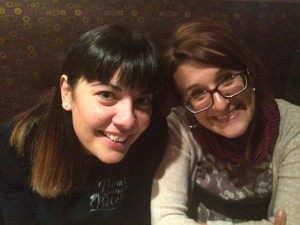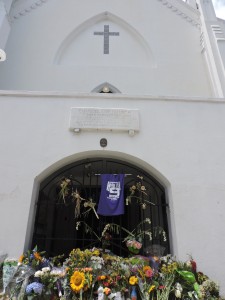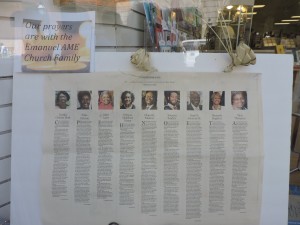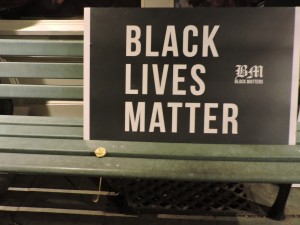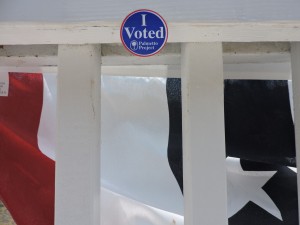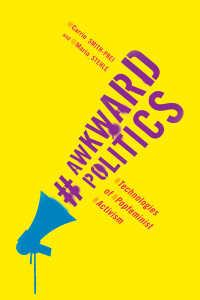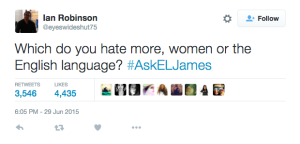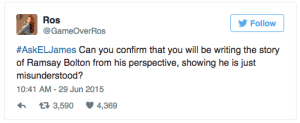When to Shut Up and Listen and When to Speak Up: Reflections on Collaboration, Race, and Activism
Maria Stehle
Listening can be a very comfortable activity; to sit, stare, and nod, either knowingly or empathetically. But, and I know I am not the first person to ask this, what are the politics of listening? What makes listening comfortable and when does it get uncomfortable? When and for whom does listening mean feeling impacted and affected? There is a similar dynamic in speaking: to speak means to have the word. But to speak can also be uncomfortable, can mean that one will either be or have to make uncomfortable, take a risk, or risk confrontation. The question I am asking is not just, as Spivak so famously phrased it, if the subaltern can speak. I am asking who can speak comfortably and safely and who takes a risk, and who can and who has to speak rebelliously (Judith Butler) or willfully (Sara Ahmed), who chooses and under what circumstances do we get to choose the voices we speak in. Thinking about the work of scholars like Spivak, Butler, and Ahmed, for me the politics of listening and speaking offer a productive avenue to confront what is often referred to as privilege. People who find themselves in a privileged position can practice this kind of safe-listening and safe-speaking, which, of course, corresponds directly to their physical safety. What this also means, however, is that, often by pointing out their own awareness of privilege, people practice a strange form of privilege; they solidify their privileged position by retreating into comfortable listening or they feel entitled to speak, yet again, since they have acknowledged their privilege. My suggestion is that rather than talking about privilege, we talk about who is talking about what and who is listening to whom, or who is, or should be, talking to each other. Why, for some people, it feels safer to shut up while for others, remaining silent becomes a threat. And yet, sometimes, not speaking can be an act of resistance. This means that we also need to talk about why and when people, either choose to or are forced to, remain silent.
There can be strategic silence, of course. For example, not the violence and abuse itself, but the media discussions about the crimes committed on New Year’s Eve in Cologne, Germany, show these strategic silences on all sides of the discussion: while some claim that a focus on sexual harassment of women by groups of men obscures the fact that the men harassing women on a central square in Cologne were not white German men, had migration backgrounds, were recent refugees, and/or Muslim. Others claim that the focus on the ethnicity of the men obscures the fact that such sexual violence is common and also commonly committed by white men, but when white men commit it, it often remains unreported. In Germany, notably the hashtag #aufschrei (outcry) has already attempted to make the sexual harassment and the sexual/sexist violence that women are subjected to on a daily basis visible when it was launched in 2013. In response to Cologne and the media responses to the Cologne attacks, a new hashtag was launched, #ausnahmslos (without exception), which calls for action against sexism and racism, without exception.
As with a lot of online activism, people who sign petitions or use hashtags find themselves in the company of often unlikely and sometimes unwelcome allies. This phenomenon is one aspect of what Carrie Smith-Prei and I describe in our book Awkward Activism: the unpredictability of digital activism, meaning that it can and often is appropriated for other, and certainly unwelcome to some, causes, that it attracts trolls and can be used against the initial cause, can lead to the argument that such activism is ineffective. We strongly argue against this critique, but admit that when it comes to political effect, we face a new kind of unpredictability, which can be so confusing that some people respond by being silent. In some cases, this is as a response to the silencing people experience themselves, which is part of this unpredictability; but it can also be a, and may I say privileged, form of retreating into silence. This is related to a certain kind of silence common to academics: they retreat behind their need to research a subject first to write about it and behind their insistence that academic writing cannot and should not be journalistic. Facing the complexities of today’s world, we cannot afford to hide behind textual analysis without also always considering context (of who speaks and who listens, of who and what is meant to silenced, and of what might happen next). We also cannot claim that we can understand that context without listening and collaborating; we cannot claim that we can speak in a singular voice. And regardless of how many voices speak, we will make mistakes. We will find ourselves in a mess. We will talk and listen und understand the mess, collaboratively. And then we will get ourselves in a mess yet again.
What, among many factors and as many voices since then have pointed out, turns talking and writing about the sexual violence committed on New Year’s eve in Cologne into such a messy, difficult, and political affair, is that “Muslim” is a racialized category and that we are talking about race; and that women’s bodies once again have become a political tool for many different sides of the messy debate about race and racism. Additionally, women with migration background, non-white women in Germany, are not part of the discourse. The fears—or panic—of refugees from war-torn countries, mainly Syria, focuses on young male migrants while images of children and mothers trigger empathy. Female refugees, the mothers, sisters, or daughters of these presumed sexual predators once again appear only as silent victims. In the face of these complexities, we—and this “we” refers to middle and upper class white women—shy away from the mess and: we either remain silent about certain aspects of the issues at hand or we might even righteously claim that political correctness needs to be put aside when we are confronting violence against women. Again, this shying away from acknowledging that this complicated mess is rooted in our positions of speech, in our feeling of entitlement or our desire to stay out of trouble, to stay safe, in our inability to confront the politics of silence and speech. Positions of white feminists have far too long relied on othering and racism, on racialized constructions of victims and perpetrators as well as of oppressed other women, and on racisms.

For a week in January, when the attacks in Cologne and their aftermath were still hotly discussed in the media, Reyhan Şahin was visiting my home university in Knoxville. And it is our listening to each other, in Reyhan sharing some of her new songs, her research, and her writing, in us listening to her talk, in our conversations with students, friends, and colleagues, but most importantly, in our talking to and with each other, which sometimes included me translating, my children’s German-English code switching, as well as the food we ate and the tea we drank together as we nursed our colds, that I found a voice to write this research blog. We must not fall silent in the face of the complexities of today’s world, the overlapping, intersecting, or assembling forms of violence, oppression, and injustice. We can speak politically when we listen to and speak to each other (see also Beverly Weber’s work on Spivak). I am writing because I am reflecting on what Reyhan and I talked about, but also on what remained unspoken, and why. I am writing to trigger responses from others and to kick-start a popfeminist academic blog. Popfeminism – a word I use in my research also to describe Reyhan Şahin’s work as Lady Bitch Ray. Now, Reyhan told me that she does not identify as popfeminist even though many journalists and researchers, including myself, describe her work as popfeminist. Popfeminism, she said, is a white term. There is hip-hop feminism. There is a new song about Cleopatra and a song about butts, coming out on Reyhan’s next album.

So, for me, listening is one part. Even if – or exactly because – listening makes one feel awkward and questioned. But when, for example, Reyhan and I jokingly referred to Reyhan and/as Lady Bitch Ray as our research subject, we took pleasure in blurring boundaries between researcher and researched, between personal conversation and friendship and academic rigor. The dynamic of the native informant, who has to speak truth to power, whereas I, as the white female researcher in a secure academic position, can listen and nod and then write something and publish it, is and remains the so-called elephant in the room. Again, this is not just a reason for me to shut up and listen. It is also the very reason why we need to listen and speak, in discomfort, but also with joy, as a form of connection, collaboration, as a killjoy and as a boundary-blurring willful subject (to return to some of Ahmed’s terms).
